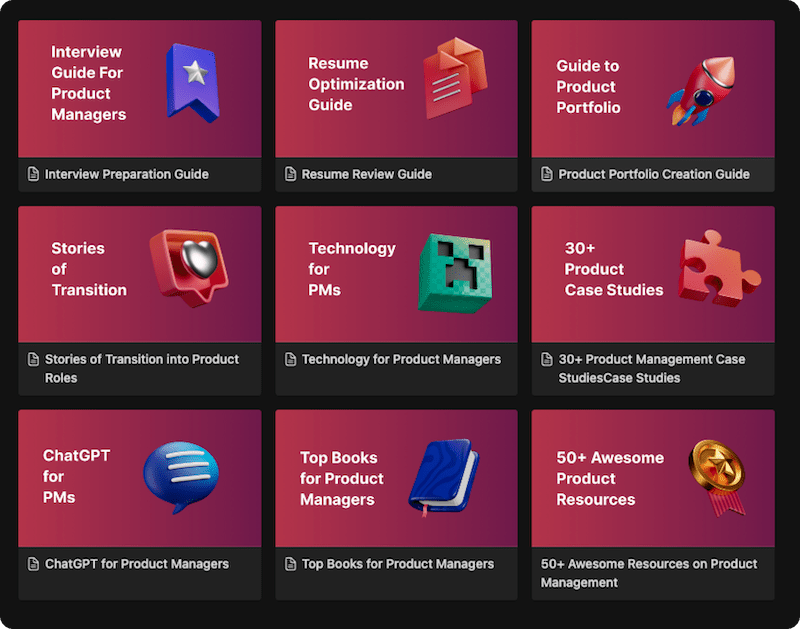Have you ever seen a development team work for months on a “big bang” release, pouring time, effort, and money into features, only to see them fall flat with users? As a product manager or team lead, there’s no worse feeling than realizing that all that hard work was spent on something nobody wanted. It’s the ultimate form of waste. What if there was a philosophy entirely dedicated to preventing this?
This is the core promise of Lean Development. It’s a powerful methodology that shifts the focus from simply being busy to relentlessly delivering value. It’s not about working harder or cheaper; it’s about working smarter by systematically eliminating anything that doesn’t contribute to what the customer truly cares about.
This guide is designed to make you a master of the Lean mindset. We will journey from its surprising origins on the factory floor to its modern application in software, breaking down its core principles and providing a practical toolkit. By the end, you’ll have the knowledge to build better products, faster, and with significantly less waste.
The Origins: From Toyota’s Factory Floor to Your Laptop
The story of Lean doesn’t begin in a Silicon Valley garage; it begins in post-World War II Japan at the Toyota Motor Corporation. Facing limited resources, Toyota engineers like Taiichi Ohno developed a revolutionary manufacturing system known as the Toyota Production System (TPS). The goal of TPS was to eliminate all forms of waste (Muda), inconsistency (Mura), and overburden (Muri) from the production process.
Decades later, in 2003, management consultants Mary and Tom Poppendieck did something brilliant. In their seminal book, “Lean Software Development: An Agile Toolkit,” they adapted these powerful manufacturing principles to the world of software development. They identified seven core principles that directly translated from the factory floor to the keyboard, providing a new way to think about building software that was already resonating with the values of the recently published Agile Manifesto.
The 7 Core Principles of Lean Development (A Detailed Breakdown)
The Poppendiecks’ work established the seven foundational principles that are the heart of Lean Development. Mastering these principles is the key to mastering Lean.
1. Eliminate Waste
This is the cornerstone of Lean. The goal is to identify and remove anything that does not add value for the customer. In software, this waste isn’t piles of scrap metal; it’s more insidious.
- What it is: Systematically identifying and removing non-value-added activities from the development process.
- Why it matters: Eliminating waste frees up capacity, reduces costs, and accelerates delivery time.
- How to apply it: We’ll dive deeper into the 8 wastes of software below, but common techniques include building a Minimum Viable Product (MVP) to avoid creating unused features and using Kanban boards to spot bottlenecks.
2. Amplify Learning
Software development is a process of discovery. Lean embraces this by creating tight feedback loops to learn as quickly as possible.
- What it is: Using short, iterative cycles and frequent customer feedback to continuously learn and improve the product.
- Why it matters: It reduces the risk of building the wrong thing by validating assumptions early and often.
- How to apply it: Use techniques like the Build-Measure-Learn feedback loop (popularized by The Lean Startup), frequent user testing, and A/B testing features.
3. Decide as Late as Possible
This principle counters the traditional approach of making big, irreversible decisions early in a project when uncertainty is highest.
- What it is: Delaying decisions that are irreversible until you have the maximum amount of real-world data and knowledge.
- Why it matters: It allows for greater flexibility and prevents teams from committing to a flawed path based on early, unproven assumptions.
- How to apply it: Build a flexible and modular architecture that allows for changes. Focus on options, not a single rigid plan.
4. Deliver as Fast as Possible
Lean is obsessed with speed, not for the sake of being busy, but for the sake of delivering value and getting feedback quickly.
- What it is: Reducing the cycle time—the time from idea to delivered value—as much as possible.
- Why it matters: The sooner you deliver, the sooner the customer gets value, and the sooner you get the feedback needed to amplify learning.
- How to apply it: Use small batch sizes (releasing small features frequently rather than large ones infrequently) and focus on creating a smooth, continuous flow of work.
5. Empower the Team
Lean philosophy believes that the people closest to the work are best equipped to make decisions about it.
- What it is: Giving developers the authority, autonomy, and resources they need to do their best work. It’s about respect for people.
- Why it matters: Empowered teams are more motivated, innovative, and faster at problem-solving. It removes the bottleneck of centralized command-and-control management.
- How to apply it: Managers should act as coaches and facilitators, not directors. Encourage local decision-making and provide the team with the tools and training they need.
6. Build Integrity In
Integrity in Lean has two forms: perceived integrity (the user’s experience) and conceptual integrity (the system’s architecture).
- What it is: Ensuring the system is cohesive, robust, and delivers a great user experience from end to end.
- Why it matters: A system with integrity is easier to maintain, change, and use. It has a longer lifespan and higher customer satisfaction.
- How to apply it: Use practices like continuous integration, automated testing, and a relentless focus on user-centered design to ensure the system works as a harmonious whole.
7. See the Whole
It’s easy to optimize one part of a process at the expense of the whole system. Lean requires taking a holistic view.
- What it is: Optimizing the entire value stream—from concept to cash—rather than just individual departments or teams.
- Why it matters: It prevents sub-optimization, where one team’s “efficiency” creates a bottleneck for another team downstream.
- How to apply it: Use techniques like Value Stream Mapping to visualize the entire end-to-end process, identify cross-functional bottlenecks, and ensure everyone is aligned on the overall goal of delivering customer value.
The 8 Wastes of Software Development (Muda)
To “Eliminate Waste,” you first have to know what to look for. Here are the eight common forms of waste (Muda) in software development, adapted from Toyota’s original seven.
[Visual Prompt: A clean table listing each of the 8 wastes, its manufacturing equivalent, and a software-specific example.]
- Partially Done Work: The equivalent of manufacturing inventory. Code that is written but not tested, deployed, or delivering value.
- Extra Features (Overproduction): Building features that the customer doesn’t need or want. This is considered the most significant form of waste.
- Relearning (Motion): Teams having to rediscover information that was already known but poorly documented or shared.
- Handoffs (Transportation): Passing work from one siloed team to another (e.g., from development to QA to operations), which creates delays and loss of context.
- Delays (Waiting): Time spent waiting for approvals, decisions, or dependencies from other teams.
- Task Switching (Over-processing): The cognitive cost and loss of productivity when a developer has to constantly switch between unrelated tasks.
- Defects (Bugs): The time and effort spent finding and fixing bugs, especially those found late in the process.
- Non-Value-Added Activities (Unused Creativity): Not utilizing the full skills, creativity, and problem-solving abilities of the team by assigning them low-value work or ignoring their improvement ideas.
Lean in Action: Common Tools and Techniques
- Kanban Boards: The visual embodiment of Lean. Kanban helps teams visualize their workflow, limit Work in Progress (WIP) to prevent task switching, and focus on maintaining a smooth, continuous flow of value.
- Value Stream Mapping (VSM): A collaborative exercise where a team maps out every single step in their development process to identify and quantify waste, especially delays and handoffs.
- The Build-Measure-Learn Loop: The engine of the “Amplify Learning” principle. You build a small feature (an MVP), measure how customers react to it using data, and learn from that data to decide what to build next.
- Minimum Viable Product (MVP): An MVP is the smallest version of a product that can be released to deliver value and start the learning loop. It is a core tactic for eliminating the waste of building unused features.
Lean vs. Agile: Friends or Foes?
This is a common point of confusion. Lean and Agile are not competing methodologies; they are deeply complementary philosophies.
- Lean is the overarching philosophy or mindset focused on maximizing value by eliminating waste. Its roots are in manufacturing.
- Agile is a set of values and principles (defined in the 2001 Agile Manifesto) for iterative software development. It values things like customer collaboration and responding to change.
- Scrum and Kanban are specific frameworks or practices that help teams implement Agile values. Kanban, with its focus on flow and WIP limits, is a direct implementation of Lean principles.
Think of it this way: Lean provides the “why” (our goal is to eliminate waste and focus on value). Agile provides the “what” (we will do this through iterative development and customer collaboration). Scrum and Kanban provide the “how” (here are the specific roles, events, and practices we will use).
Conclusion: A Mindset for Modern Development
Lean Development is not a rigid set of rules or a strict process to be followed dogmatically. It is a mindset and a culture built on the foundations of continuous improvement, respect for people, and an unwavering focus on delivering value to the customer. By learning to see and systematically eliminate waste, you empower your team to do their best work.
Adopting Lean principles allows you to move faster, build better products, and respond more effectively to change. It transforms your development process from a complex, unpredictable machine into a streamlined, efficient “software factory” designed for one purpose: creating exceptional value with minimal effort.
FAQ’s
Lean and Agile are best thought of as two overlapping philosophies. The Agile Manifesto was published in 2001, and the “Lean Software Development” book came out in 2003. They developed in parallel and share many core ideas, like delivering value iteratively and empowering teams. Many consider Lean to be a parent philosophy to many Agile practices.
While all seven principles are interconnected, “Eliminate Waste” is often considered the cornerstone. The relentless focus on identifying and removing anything that does not add value to the customer is what drives most of the other principles and practices in Lean.
Yes, absolutely. Teams can apply Lean thinking to their existing Scrum process. For example, a Scrum team can use a Kanban board to visualize their sprint backlog, set Work in Progress (WIP) limits to reduce task switching (a form of waste), and use their Sprint Retrospective to identify and eliminate other forms of waste from their process.
In a Lean environment, the manager’s role shifts from being a director or task-assigner to being a coach and facilitator. Their job is to empower the team, remove obstacles, provide the necessary resources and training, and foster a culture of continuous improvement, rather than managing the day-to-day work.
Learn better with active recall quiz
How well do you know What is Lean Development? Let’s find out with this quick quiz! (just 10 questions)


